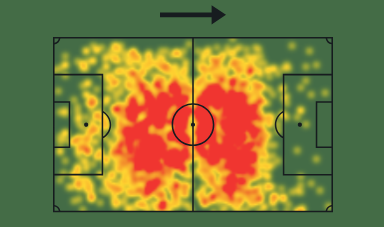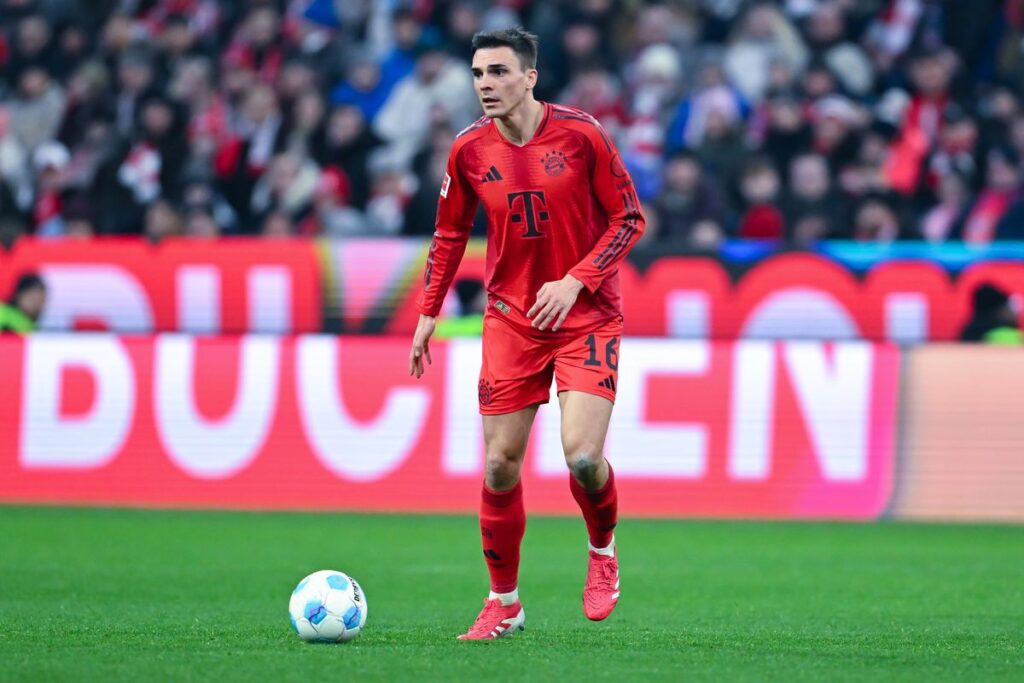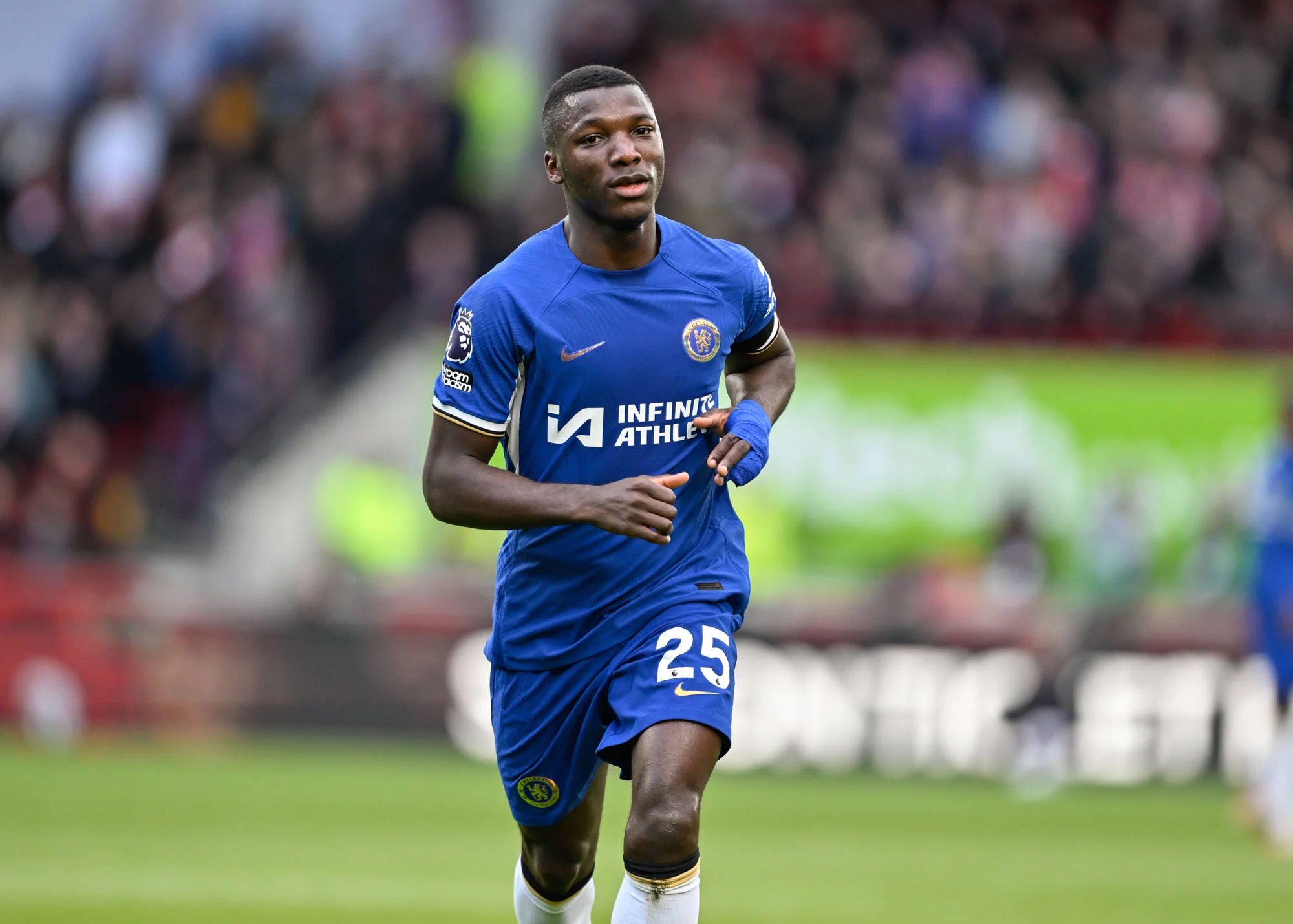In modern football, the defensive midfielder, often wearing the #6 jersey, is evolving far beyond the traditional role of a ball-winning enforcer. Today’s emerging midfielders combine exceptional progressive passing with unparalleled press resistance, becoming pivotal in linking defense with attack while dictating the tempo of play.
A Tactical Evolution
Traditionally tasked with shielding the back line, the modern #6 now operates as a deep-lying playmaker. These players are expected to:
- Break Defensive Lines: With incisive, long range passes, they open up play and transition their teams from defense to attack.
- Resist Opposition Pressure: Their tactical intelligence and physical discipline allow them to remain calm under high pressing, often recovering and redistributing the ball within seconds.
- Act as a Pivot: Serving as the fulcrum between the defense and the creative units, they are critical in retaining possession and launching counterattacks.
Recent tactical analyses highlight how players in this role often drop deep to collect the ball and then shift the point of attack with a single, well-timed pass. This dual responsibility demands not only physical prowess but also a keen understanding of spatial dynamics and game tempo.
Statistical Insights and Modern Metrics
Modern analytics have reshaped our understanding of the #6 role by quantifying aspects such as progressive passing, press resistance, and recovery rates:
- Progressive Passing: Emerging midfielders average between 40 to 50 progressive passes per game. These passes, often spanning 25–30 meters, are designed to bypass congested midfield zones and transition quickly into attacking opportunities.
- Pass Completion Rates: With pass accuracy frequently exceeding 90%, these players minimize risk and maintain fluid possession, even under relentless opposition pressure.
- Interceptions and Recoveries: High press resistance is measured by recovery time after losing possession. Top emerging #6s typically record interceptions of around 1.5/2 per game while regaining control within an average of 2/3 seconds.
- Press Efficiency: Advanced metrics indicate that these players contribute to a team’s overall press by effectively neutralizing opponents’ advances, often leading to turnovers in high-value areas of the pitch.
Such statistics are becoming integral in scouting reports and tactical planning, as coaches seek midfielders who can not only disrupt the opposition but also serve as the launching pad for counterattacks.

Moisés Caicedo: The Complete Package
After a period of adaptation following his £115 million move to Chelsea, Moisés Caicedo has emerged as perhaps the Premier League’s most complete young defensive midfielder. The 23-year-old Ecuadorian embodies the modern #6, combining defensive excellence with progressive capabilities.
Statistical Profile (2024-25 season):
- Defensive actions: 3.01 tackles and 3.16 blocks/interceptions per 90 minutes
- Press resistance: 89% success rate under pressure
- Ball progression: 5.66 progressive passes per 90 minutes
- Duel success: 64% ground duels won
- Chance Creation: 2.67 shot-creating actions per 90 minutes
What separates Caicedo from his peers is how he balances defensive discipline with progressive intent. Under Enzo Maresca’s possession-oriented system, he’s become instrumental in Chelsea’s build-up phase, often dropping between the center-backs to create a temporary back three.

His heat map shows significant coverage across the middle third, demonstrating his ability to protect space effectively while still contributing to attacking sequences. When Chelsea transition to attack, Caicedo excels at breaking opposition lines with incisive vertical passes, averaging 5.66 progressive passes per 90 minutes.

João Palhinha: Bayern’s Defensive Anchor
While perhaps more established than some other names on this list, 29-year-old João Palhinha has refined his game at Fulham to become one of the Premier League’s most effective defensive midfielders, blending traditional ball-winning with modern distribution skills.
His move to Bayern Munich, which finally materialized after a collapsed transfer the previous summer, has seen Palhinha successfully adapt to a dramatically different tactical context. Under Vincent Kompany, he’s maintained his defensive excellence while adapting to a system that requires far more technical security and positional discipline.
Statistical Profile (2024-25 season):
- Integration into possession system: 88.7% pass completion rate
- Ball progression: 5.8 progressive passes per 90 minutes
- Defensive output: 4.4 tackles per 90 minutes (even in a more dominant team)
- Aerial Duels: 1.71 aerial duels won per 90 minutes
Bayern sporting director Christoph Freund highlighted this evolution: “João has shown he’s not just a defensive specialist but a complete midfielder who can excel in multiple systems. His adaptation to our possession-based approach has been remarkable.”
Palhinha’s success in Germany underscores how the modern #6 must combine traditional defensive qualities with technical proficiency—a combination that Premier League midfielders like those profiled above are increasingly mastering.

Martín Zubimendi: Modern Midfield Anchor
At 25 years old, Martín Zubimendi represents the modern defensive midfielder who balances traditional defensive responsibilities with progressive capabilities. The Real Sociedad academy graduate has established himself as one of LaLiga’s premier #6s, earning recognition both domestically and internationally with Spain.
Statistical Profile (2024-25 season):
- Tactical Intelligence: Exceptional positioning and reading of the game
- Technical Security: 91% pass completion rate with ability to play under pressure
- Defensive Awareness: 2.4 interceptions and 2.1 tackles per 90 minutes
- Press Resistance: Rarely dispossessed (0.6 times per 90)
- Aerial Presence: Wins 65% of aerial duels despite not being physically imposing (180cm)
Martín Zubimendi represents the balanced modern #6 who can both protect the defense and contribute to build-up. His rise coincides with the position’s evolution from pure destroyer to a technically proficient, tactically sophisticated role that serves as the fulcrum between defense and attack.
The defensive midfielder may no longer grab headlines, but their importance has only increased in the modern game. As tactical systems continue to evolve, the #6 position remains the foundation upon which successful teams are built – balancing defensive solidity with the technical quality needed in contemporary football.
Tactical Evolution: The Future of the Position
The profiles above demonstrate the diverse interpretations of the modern #6 role. While specific skillsets vary, clear patterns emerge that define this position’s evolution:
- Technical security under pressure is now non-negotiable
- Positional intelligence has largely replaced pure tackling ability
- Progressive passing is expected alongside defensive duties
- Tactical flexibility to adjust positioning based on game state
- Decision-making speed in transitions has become critical
Data supports this evolution. Across the Premier League, defensive midfielders now attempt 24% more forward passes than five years ago, while their pass completion rates have improved from an average of 84% to 90%. Meanwhile, the average number of tackles per 90 for elite #6s has decreased from 3.6 to 2.6, reflecting the shift toward intelligent positioning over reactive defending.
Redefining Defensive Midfield Excellence
The next generation of Premier League #6s represents a fundamental redefinition of what constitutes excellence in defensive midfield play. Technical security, progressive passing, and intelligent positioning have supplanted the pure destructive qualities that once defined the role.
Players like Caicedo, Chukwuemeka, Lavia, Onana, Gray, and Iroegbunam offer different interpretations of the position, but all share the core qualities that modern systems demand. Meanwhile, Palhinha’s successful transition to Bayern Munich demonstrates how Premier League defensive midfielders are now capable of excelling across tactical contexts.
As possession-oriented approaches continue to dominate football tactics globally, these technically proficient defensive midfielders will only grow in importance. The days of the limited destroyer shielding the back four are fading – replaced by technically accomplished midfielders who serve as the first line of attack as much as the last line of defense.
